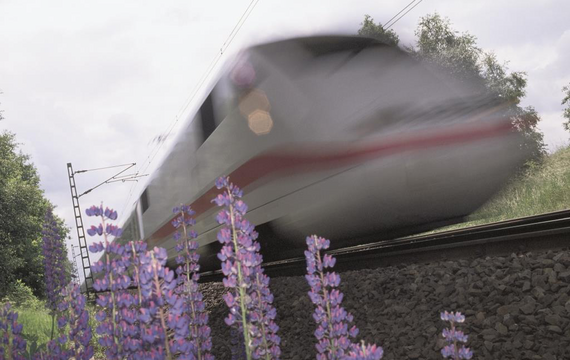
Urban railway traffic finds itself confronted by noise-sensitive surroundings. Getzner has the ideal solutions for minimising vibrations and noise in urban areas.
Find out more
You're now leaving the US-Version of Getzner.com and about to change to Getzner International Website
OKOur applications in the railway sector
Railway lines and urban developments are becoming increasingly close neighbours, in order to meet the growing demand for effective solutions for the sustainable expansion of rail transport and rail network through track construction, but also through reactivation of railway lines. Vibrations and structure-borne noise generated by rail transport, but also other harmful environmental effects, have a detrimental effect on residents and adjacent buildings. Our Sylomer® and Sylodyn® solutions reduce vibrations effectively and improve quality of life and working conditions.
Our materials, which are used for example in diverse mass-spring systems and under ballast mats, introduce more elasticity into the railway superstructure. This results in less wear on the superstructure components such as rails, sleepers and ballast. Rail operators find that the maintenance outlay and life cycle costs for their lines are considerably reduced.
Our railway solutions have been designed to cope with all axle loads and speeds. They are used all over the world and are leading products in the railway sector.

Urban railway traffic finds itself confronted by noise-sensitive surroundings. Getzner has the ideal solutions for minimising vibrations and noise in urban areas.
Find out more
Local transit lines often run through densely populated areas. Elastic solutions from Getzner make sure that residents can live and work in peace.
Find out more
A bearing with elastic components from Getzner reduces the upkeep for a standard-gauge railway line. The surrounding area is also protected against disruptive vibrations.
Find out more
High speeds mean tremendous stresses for the railway superstructure. Solutions from Getzner create a balance that protects the components.
Find out more
In heavy freight traffic, the superstructure components are exposed to enormous loads. The materials from Getzner ensure lower wear and increase the availability of track sections subject to heavy loads.
Find out more
Discover our solutions for the bearing of wagon floors.
Find out more
Getzner is your partner for the development and implementation of customised solutions.
Find out more